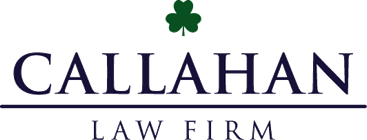
Understanding Bankruptcy: What Is Chapter 13 Bankruptcy?

Bankruptcy is considered to be the nuclear option when it comes to relieving debt.
You may be most familiar with Chapter 7. It makes up over half of all bankruptcies and is the equivalent of wiping your slate clean (both your debts and your assets).
However, Chapter 13 bankruptcy differs substantially. First, you receive a debt payment plan rather than a discharge of your debts. In exchange, you get to keep assets like your house.
Are you struggling with crippling debt but don't want to give up everything to get rid of it? Keep reading to learn the ins-and-outs of Chapter 13 bankruptcy.
It caters to Americans with normal incomes but who need extra help to repay their debts.
When you file for Chapter 13, you have a chance to come up with an installment repayment plan. If approved, you make payments over three or five years. The term depends on whether your monthly income is over the state median. If you make more than the median income, you pay over a five-year term. However, the court makes an exception and allow you to pay the three-year term.
At its core, a Chapter 13 bankruptcy helps you reorganize your finances so that you can pay back your debts without blowing up everything you worked for along the way.
When you complete the term, your debt is then discharged.
However, Chapter 13 bankruptcy differs substantially. First, you receive a debt payment plan rather than a discharge of your debts. In exchange, you get to keep assets like your house.
Are you struggling with crippling debt but don't want to give up everything to get rid of it? Keep reading to learn the ins-and-outs of Chapter 13 bankruptcy.
What is Chapter 13 Bankruptcy?
Chapter 13 bankruptcy is often referred to as a "wage earner's plan."It caters to Americans with normal incomes but who need extra help to repay their debts.
When you file for Chapter 13, you have a chance to come up with an installment repayment plan. If approved, you make payments over three or five years. The term depends on whether your monthly income is over the state median. If you make more than the median income, you pay over a five-year term. However, the court makes an exception and allow you to pay the three-year term.
At its core, a Chapter 13 bankruptcy helps you reorganize your finances so that you can pay back your debts without blowing up everything you worked for along the way.
When you complete the term, your debt is then discharged.
Who is Eligible for Chapter 13?
All individuals, including self-employed workers or sloe proprietors, can apply for Chapter 13 relief. However, you can only apply when your unsecured debts (credit cards, personal loans, medical debt, etc.) are under $394,725. Your secured debts (homes, property, auto, etc.) are below $1,184,200.You cannot file for Chapter 13 as a business or a joint partnership.
Additionally, you need to complete several requirements before you apply.
First, you can't apply if you already filed a bankruptcy petition and the court dismissed it because:
- You didn't appear in court
- You didn't comply with a court order
- Your creditors asked for relief from the court
If this is your first petition in the past 180 days, then you need to meet a third condition: completing credit counseling. You must receive the counseling from an approved agency, except for in emergency situations or if there is not an approved agency available to help you.
Your credit counselor will likely help you develop a debt management plan. If they do, you will likely file it with the court when you start your petition.
What are the Benefits of Choosing Chapter 13 Bankruptcy?
There's a reason Chapter 7 bankruptcy is popular. It takes around six months, and it discharges all your debt (bar student loans and tax debt). If you are drowning in debt, it may be appealing.However, not everyone qualifies for Chapter 7. More importantly, Chapter 13 bankruptcy can offer benefits that Chapter 7 won't.
First, Chapter 13 may still cover you if you earn more than the Chapter 7 threshold. You may also use Chapter 13 if you already received a discharge in a previous Chapter 7 petition.
Second, you have the term to pay back amounts on secured loans so that you can keep your house or car if you wish.
Third, Chapter 13 tackles tax debt. You can catch up on missed tax payments, alimony, and child support with the payment plan.
Fourth, it better helps you manage student loan payments, particularly when they were previously out of reach.
Finally, you can include your attorney fees in the payment plan instead of finding a way to pay upfront.
The bottom line: Chapter 13 tackles debts and fees that Chapter 7 leaves behind, so that when you leave bankruptcy, your finances are back on track.
What is the Timeline of a Chapter 13 Case?
From beginning to end, a Chapter 13 case lasts for at least three to five years, depending on your payment plan. The case usually wraps up six to seven months after your final payment.Although each case is different, we can break all cases down into three periods:
- Pre-filing and filing
- Payments
- Discharge
Prefiling and Filing
The prefiling and filing phases are the most uncertain of the whole cases.Before you can present your petition, you and your attorney need to review all your financial data. This period is essential because if your bankruptcy isn't based on facts, you (and your attorney) can face sanctions from the court.
You also need to complete credit counseling with the approved agency.
From here, your attorney completes your petition, schedules, and statements to present to the court.
The total length of time it takes depends on the state and complexity of your finances. Once you're ready to file, things begin to pick up. You can sign and file a Chapter 13 petition on the same day, which then becomes your "petition date."
The wait between your initial meeting and your petition date can feel longer than it is because your automatic stay doesn't go into effect until you file from the court. An automatic stay prevents creditors from collecting their debts.
Sending Documents to the Bankruptcy Trustee
Once you file, you have 21 days to provide your documents to your assigned bankruptcy trustee, who manages your payment plan. They will usually present you with a list of required documents. You also need to provide the documents noted in Section 521 of the U.S. Code.It's advisable to work quickly here because you need to start paying off your debts within 30 days after you file.
Making Payments
You must start making payments on the plan filed with the court within 30 calendar days after you file. The only exceptions are those provided by the court.It is important to remember that in most cases, you will make payments on your plan before you go to court.
The meeting of creditors usually occurs 30 to 40 days after you file.
What is the Meeting of Creditors?
The meeting of creditors doesn't take place until at least 30 days after you file your petition. It can't occur earlier than 21 days after filing or later than 50 days after you file It is your first court date, and it allows the creditors to ask you questions about your finances. The trustee will also ask you questions in relation to your plan and schedules.If the trustee needs more information, you may need to continue the meeting at a later date.
Your court date confirms your plan and gives the trustee and creditors a chance to object. They have seven days to put forward any official objections.
After this, you file your debtor education certification (45 days after the meeting). You can expect a plan confirmation with 30 days after the first meeting 9unless there's an objection).
This assumes that there are no objections or that you only put forward a single plan (rather than several plans to address issues raised during the hearing). Your plan then lasts 36-60 months depending on the plan you present.
Can You Modify the Plan?
Three to five years is a long time to make mandatory payments. During that time, you could lose your job, become unwell, or go through another hardship.If this occurs, you can apply for a plan modification after your plan confirmation. You need to ask your attorney to propose it in the court.
Keep in mind the plan can be modified multiple times. If you lose your job for six months and then get a new one, you can modify it to reflect unemployment and then again for gainful employment.
Discharge
At month 37 or 61, you finally complete your payment plan.As long as you met all the considerations involved in the plan, it is then complete. Your trustee then issues the Notice of Completed Plan Payments. Your trustee and your attorney then present relevant facts to the court to secure your discharge.
This occurs via the trustee's final report, which they submit within four months of your last payment. Creditors can then object if they wish, but they must do so within 33 days.
When the final report is complete and the certifications are presented, the court then notifies the creditors of the intent to discharge. Your creditors have 14 days to object.
When the discharge is complete (usually 5.5 years after you first file), you no longer owe the debts presented in your bankruptcy case. Creditors no longer have a right to attempt to collect the debt.
Your bankruptcy case officially ends with a final decree from the court. It discharges the trustee and you receive any scheduled assets back.
Is Chapter 13 Bankruptcy the Right Choice for You?
Filing for bankruptcy is a huge step on your journey to managing your debt. Chapter 13 bankruptcy sets up a payment plan to follow for three to five years before discharging your remaining debt. In exchange for making the payments, you can keep your assets and continue paying on other debt, like your house or car.Are you considering filing for Chapter 13 bankruptcy? Click here to take the Chapter 13 means test to see if you qualify.
Are you ready to file? Get in touch to learn how a bankruptcy attorney can help present a manageable payment plan and start you on your journey towards being debt-free.
